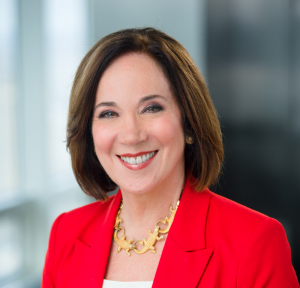
by Kathleen Hays, Global Economics and Policy Editor for Bloomberg Television and Radio
Jay Powell led the Federal Reserve in one of its most dramatic policy reversals in recent history in 2019. After hiking rates four times the year before, the Fed suddenly paused in January. And then in July it cut its key rate by 25 basis points – its first rate cut since the financial crisis – followed by two more in September and October.
Now the Fed has thrown markets another curve ball, saying its three “insurance” rate cuts are enough to ward off any damage to manufacturing and investment done by the trade war and keep the longest economic expansion in U.S. history going.
The big question now is has the Fed done enough? Or will the
Fed find itself back on its rate-cutting horse in 2020?
“The economy is in a good place:” this
has becomes the Fed’s favorite mantra. Unemployment remains near a 50-year low,
wages are not soaring but they are gradually rising, and that’s keeping
inflation within spitting distance of the Fed’s 2% target.
Fed officials acknowledge that the biggest risk to their outlook is that
trade-war does not take a step toward resolution with a phase-one deal. San
Francisco Fed bank president Mary Daly succinctly expressed the Fed’s view recently
when she said that, if the trade war continues and causes a further
slowdown in investment and manufacturing that starts to spill over into
consumer confidence, this would be could cause her to rethink the conclusion
that the Fed has done enough for now.
So what is the outlook for the consumer? What is the outlook for the trade
deal?
There are signs the consumer may be pulling back just as the crucial holiday
shopping season has begun. The October retail sales report pretty much came as forecast, but seven of
the 13 major categories decreased, notably furniture, clothing, and
restaurants.. The three-month annualized increase in retail sales – often a
proxy for what’s going on in any given quarter – was up just 2.0%, the weakest
in eight months.
In addition, department store sales have been mixed at best. TJ Maxx, Target
and Nordstrom posted great fiscal third quarter results. But Macy’s cut
its profit and sales expectations for the year after it posted its first
comparable store sales decline in almost two years and Kohl’s cut its full-year
profit forecast for the second time this year.
As for the trade war, the back and forth between U.S. and China
continues the two sides try to agree on a phase-one trade deal before the
December 15 deadline when the US set to impose an additional 15 percent tariff on $156B worth of Chinese products,
including video game consoles and computer monitors.
The Fed’s concern of the potential damage from not even reaching a phase one
deal is not limited to what it means for the U.S. Escalating the tariffs will
put more pressure on China’s exports and manufacturing and cause the world’s
second largest economy to slow even more. And it’s not just China. South Korea
and Japan have seen their exports drop on a year-over-year basis for 11
quarters in a row.
If a phase-one trade deal is signed and another round of tariffs
is avoided, this will likely reinforce the consensus view on the Fed that
enough has been done with rate cuts to keep the U.S. economy chugging along
into 2020.
If it is not signed, if the uncertainty keeps businesses on the investment
sidelines, and if there are signs this is dragging down the consumer as well,
Jay Powell may open the door to rate cuts again. Not because President Trump
keeps pounding the table for the Fed to do more, but because Powell wants to
make sure the Fed does whatever it takes to keep the economy afloat while
businesses and consumers navigate troubled trade war waters.


